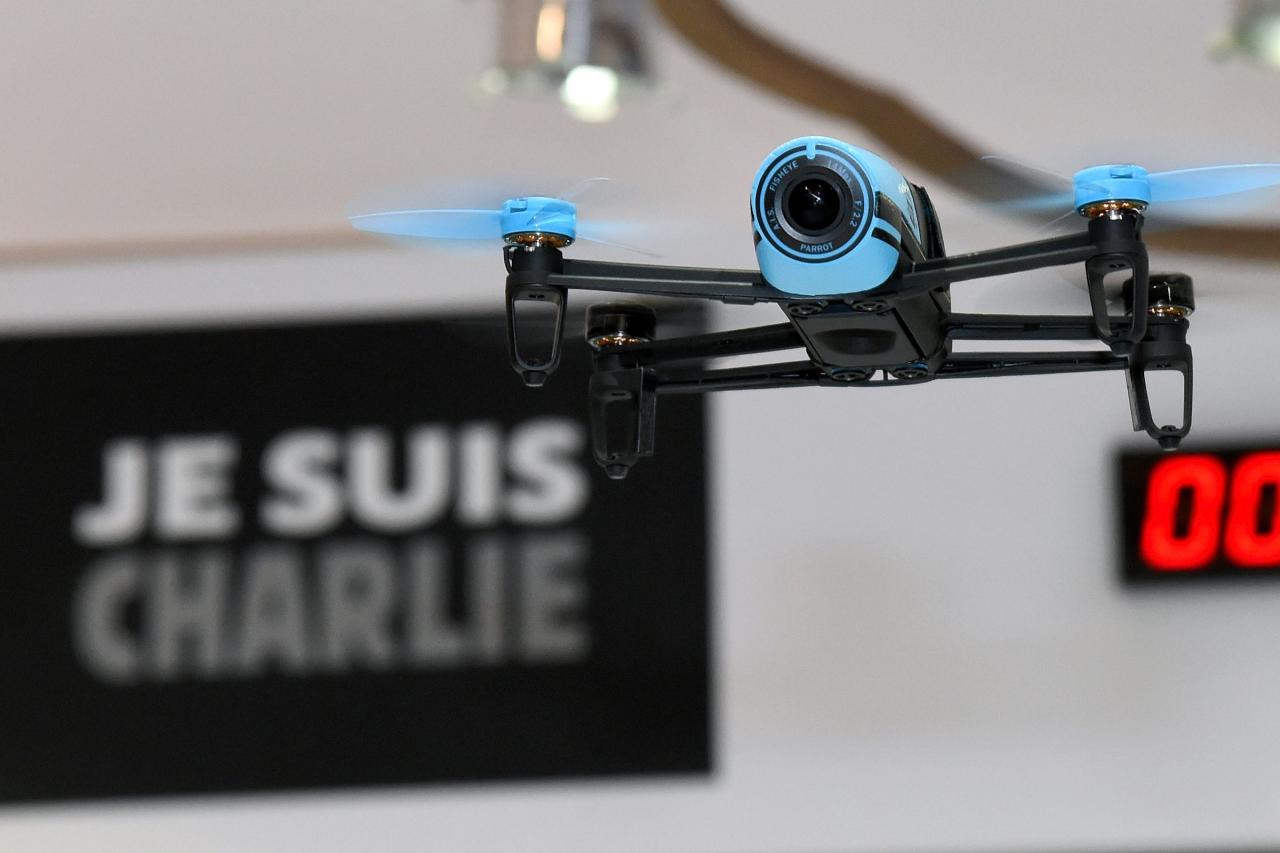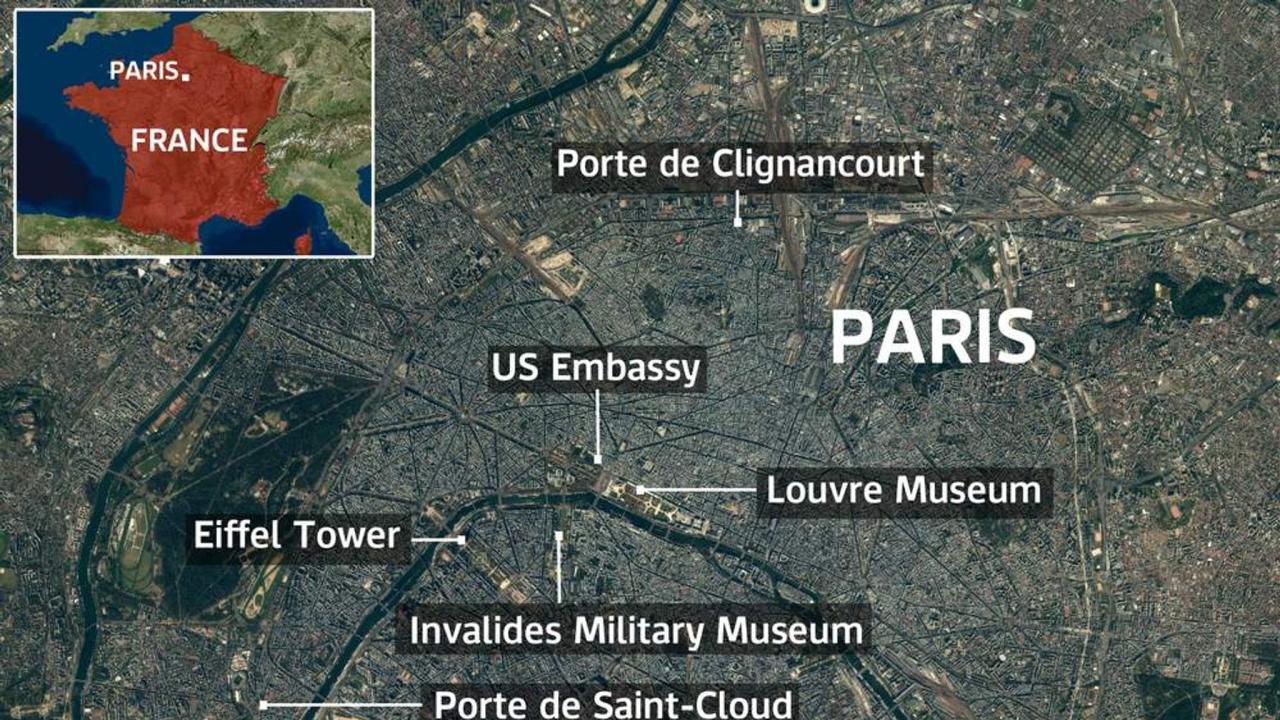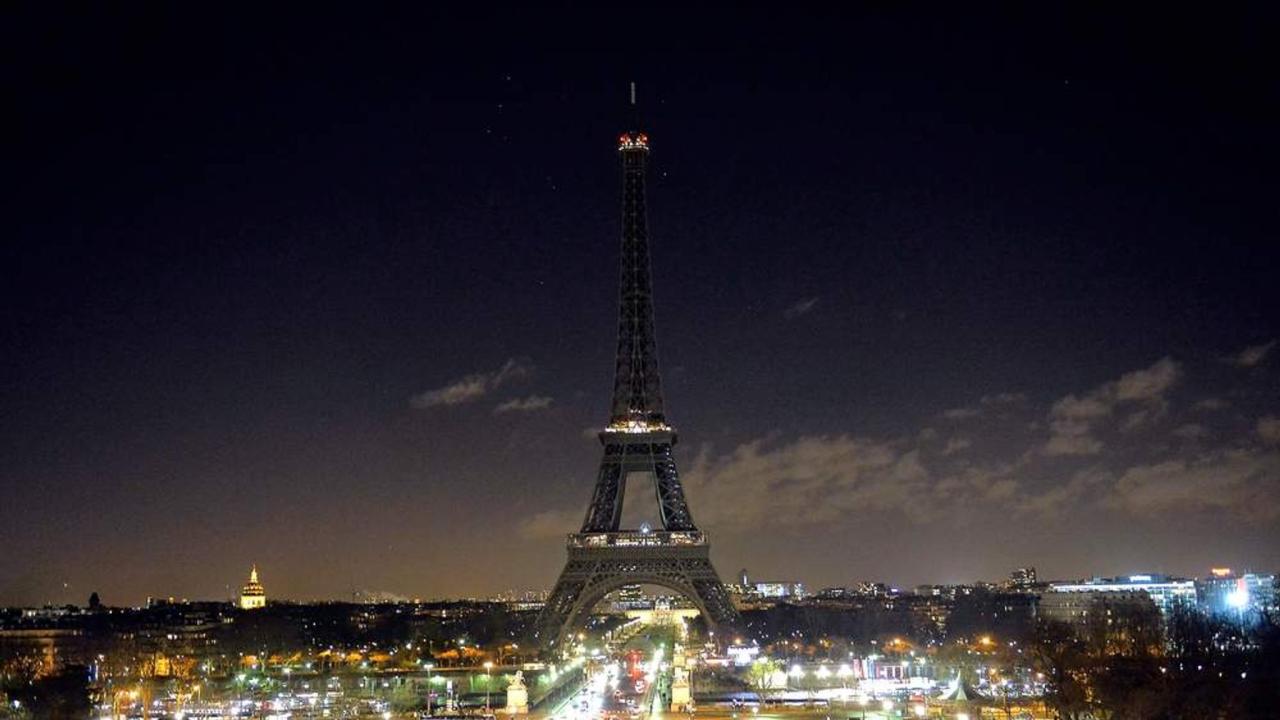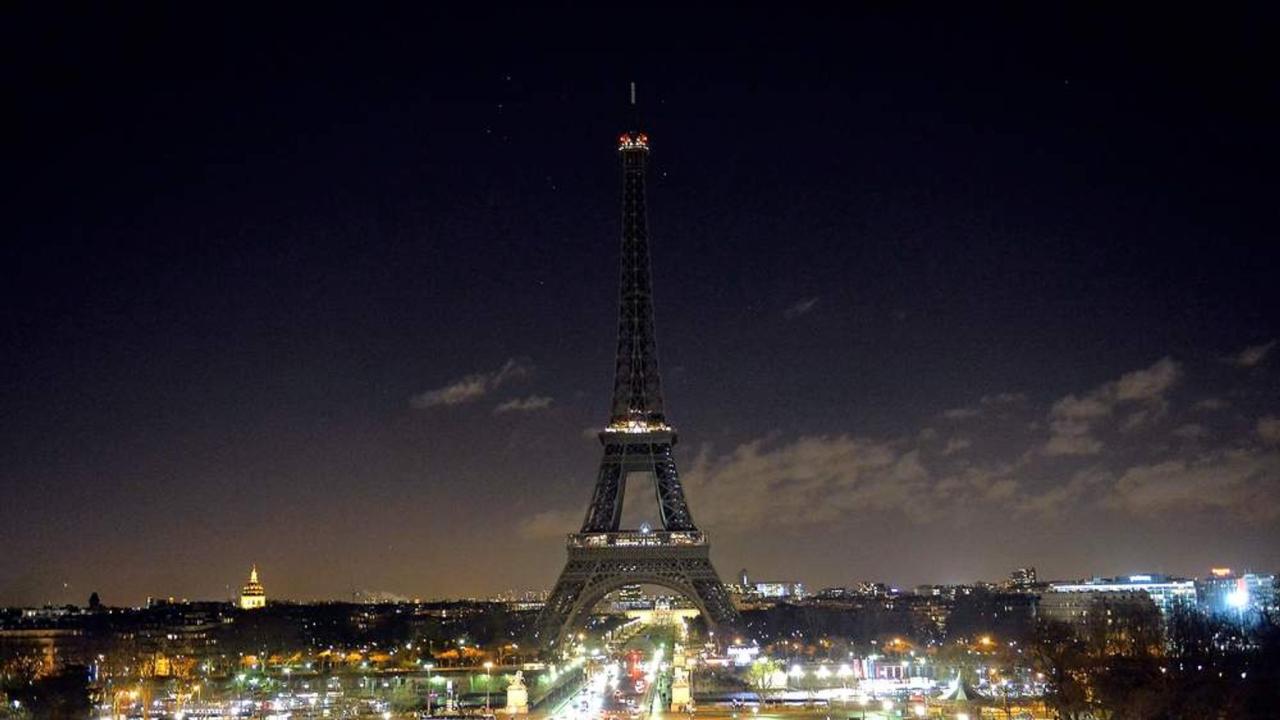Mystery Drone Paris: Strange unmanned aerial vehicles have been spotted across the City of Lights, sparking curiosity and concern. These mysterious drones, varying in size and capabilities, have been sighted in diverse locations, from iconic landmarks to quiet residential areas. Their purpose remains a puzzle, leading to speculation ranging from harmless photography to more sinister activities. This article delves into the reported sightings, explores potential motives, and examines the technological and societal implications of this intriguing phenomenon.
We’ll explore the characteristics of the drones, analyze potential uses (both legitimate and illicit), and discuss the technological aspects, including tracking and identification. We’ll also consider the impact on Parisian life, from resident safety to tourism, and examine official responses. Finally, we’ll look at hypothetical scenarios illustrating both positive and negative uses of these mysterious airborne visitors.
Recent Sightings and Reports

Reports of mysterious drone activity in Paris have increased in recent weeks, sparking curiosity and concern among residents and authorities alike. These sightings are characterized by unusual flight patterns, often at night, and a lack of clear identification of the drones’ operators or purpose. The information below summarizes recent observations, highlighting key details and any discernible patterns.
Drone Sighting Characteristics and Locations
The drones observed are consistently described as being relatively small and quiet, making them difficult to track. Many witnesses report a dark, almost black, coloration, though this may be due to limited visibility conditions. Sightings have primarily clustered around central Paris, with a notable concentration near iconic landmarks such as the Eiffel Tower and the Louvre Museum, although some reports have emerged from more peripheral areas.
The drones’ flight patterns are erratic, sometimes hovering for extended periods and at other times moving rapidly and unpredictably.
Chronological Summary of Sightings
The apparent increase in sightings began approximately three weeks ago, with reports initially scattered and lacking consistency. However, in the past week, the frequency of reported sightings has noticeably increased, suggesting a possible pattern or coordinated activity. Early reports focused on single drone sightings, but more recent reports describe multiple drones operating simultaneously, sometimes in coordinated formations. This shift in observation patterns raises questions about the drones’ purpose and potential coordination.
That whole mystery drone thing in Paris got me thinking about the future of deliveries. If they’re using drones secretly, maybe it’s a test run like Amazon’s program, you can check out their current amazon drone delivery locations to get an idea of their scope. Perhaps the Paris drones are part of some similar, albeit more clandestine, operation.
It’s all pretty intriguing, isn’t it?
Summary Table of Drone Sightings
| Date | Time | Location | Description of Drone | Witnesses |
|---|---|---|---|---|
| October 26, 2023 | 23:45 | Near Eiffel Tower | Small, dark drone; erratic flight pattern | Multiple witnesses; police report filed |
| October 27, 2023 | 01:15 | Louvre Museum area | Single, dark drone; hovering for extended period | Security guard; CCTV footage reviewed |
| October 28, 2023 | 22:00 | Marais District | Two drones observed in close proximity; synchronized movements | Several residents; social media posts |
| October 29, 2023 | 00:30 | Latin Quarter | At least three drones; rapid, unpredictable flight patterns | Multiple student witnesses |
Potential Purposes of the Drones

The mysterious drones sighted over Paris could have a variety of purposes, ranging from entirely benign to highly suspicious. Understanding the potential uses, both legitimate and illicit, is crucial to interpreting the sightings and assessing any potential threat. We will examine several possible scenarios, weighing the likelihood of each based on the currently available information, which is admittedly limited.
Legitimate Uses of Drones in Paris
Drones offer a range of legitimate applications in a city like Paris. Their versatility makes them suitable for various commercial and public service roles. The relatively open airspace above the city, punctuated by iconic landmarks, also presents attractive opportunities for drone operation.
One obvious use is aerial photography and videography. Imagine a drone capturing breathtaking footage of the Eiffel Tower at sunset, or creating stunning panoramic views of the city’s sprawling architecture. These images could be used for tourism promotion, real estate marketing, or even historical documentation. Furthermore, inspecting building facades for damage, assessing the structural integrity of bridges, or surveying construction sites are other practical applications that leverage the drone’s aerial perspective and maneuverability.
That whole mystery drone thing in Paris got me thinking about drone safety. It makes you wonder about the potential for accidents, like that crazy orlando drone show accident which highlighted the need for better regulations and pilot training. Hopefully, investigations into the Paris drones will lead to similar improvements to prevent future incidents.
Delivery services are another potential legitimate use. Companies could utilize drones for efficient and rapid delivery of small packages within the city, potentially bypassing traffic congestion and improving delivery times. Visualize a drone delivering a small package of medicine to a hospital or a urgent document to a law firm.
Finally, law enforcement and security agencies could employ drones for surveillance purposes. This could involve monitoring large crowds during public events, searching for missing persons, or conducting aerial patrols to deter crime. A drone equipped with thermal imaging could, for instance, quickly locate a lost child in a park at night.
Illicit Uses of Drones in Paris
The same technological advantages that make drones useful for legitimate purposes also make them attractive tools for illicit activities. The potential for misuse is a significant concern.
That whole mystery drone thing in Paris has everyone buzzing, right? It got me thinking about other drone incidents, and I stumbled upon this article detailing a paris drone crash that sounds pretty wild. Maybe it’s related somehow? Either way, the mystery drone situation is definitely making waves and sparking a lot of speculation about drone safety and regulation in the city.
Espionage is a clear possibility. A drone equipped with high-resolution cameras and advanced sensors could be used to gather intelligence on sensitive locations, such as government buildings or military installations. Consider a scenario where a drone equipped with eavesdropping equipment is deployed near a high-security building to intercept conversations.
Criminals could also exploit drones for various purposes, such as transporting contraband, conducting surveillance on targets, or even carrying out attacks. Imagine a scenario where a drone is used to deliver a small explosive device to a specific location. Another example could be a drone used to smuggle drugs into a prison.
Finally, drones could be used for disruptive activities, such as disrupting air traffic or causing general chaos and alarm. A swarm of drones could potentially overwhelm air traffic control systems, causing significant disruption to flights at Charles de Gaulle Airport.
Likelihood of Each Purpose
Based on the limited information available, it’s difficult to definitively assess the likelihood of each purpose. However, legitimate uses such as photography and delivery seem more plausible given the readily available technology and existing commercial applications. The illicit uses, while certainly possible, would require a higher degree of sophistication and carry greater risk of detection. The absence of any reported damage or disruption suggests that malicious intent, at least in the cases reported so far, is less likely than legitimate uses.
Technological Aspects of the Drones
The mystery surrounding the Parisian drones necessitates a closer look at their potential technological specifications. Determining the exact models is impossible without physical examination, but analyzing reports allows us to infer likely capabilities and limitations. We can then explore how such drones might be tracked and identified.The descriptions of the drones – often described as silent, maneuverable, and capable of sustained flight – suggest several possibilities.
These are not mutually exclusive; multiple drone types could be involved.
Possible Drone Types, Mystery drone paris
The size and capabilities reported suggest the drones are likely not small, hobbyist-grade quadcopters. Instead, they probably fall into the categories of larger multirotor drones or possibly even fixed-wing UAVs (Unmanned Aerial Vehicles), depending on the reported flight duration and range. Multirotor drones, with their vertical takeoff and landing capabilities, are more suited to navigating the Parisian cityscape, while fixed-wing UAVs might be more appropriate for longer-range surveillance, if that was indeed a purpose.
The silence suggests advanced motor technology and potentially the use of carbon fiber materials for a lighter, quieter frame.
Drone Technology Speculation
Based on reports, we can speculate on the technology employed. High-resolution cameras are likely, given the potential for surveillance. We might be talking about cameras capable of capturing 4K or even 8K video, providing incredibly detailed images. Flight range would need to be substantial to cover the distances reported, potentially exceeding 50 kilometers with appropriate battery technology and possibly utilizing onboard power generation techniques or swapping batteries mid-flight.
Battery life is another key factor; a sustained flight over several hours would require large, high-capacity batteries, or some form of alternative power source.
Drone Tracking and Identification
Tracking and identifying these drones present a significant challenge. Standard methods like GPS tracking might be circumvented through signal jamming or spoofing. However, advanced techniques could be employed. Analyzing the drones’ flight patterns for unusual behaviors or identifying unique characteristics in their flight data (e.g., specific motor frequencies or flight control algorithms) could aid in tracking. Additionally, analyzing video footage for identifying marks or unique features on the drones themselves could help in identification.
Law enforcement agencies might utilize specialized sensors or radar systems to detect and track the drones’ radio frequencies or physical signatures. The use of AI-powered image recognition to identify the drones from various angles, even in low-light conditions, could be a crucial element in identification.
Drone Capabilities and Limitations
The reported capabilities suggest sophisticated technology. However, limitations remain. Weather conditions, such as strong winds or heavy rain, could significantly impact flight performance. The drones’ batteries would have a limited capacity, restricting their flight duration. Signal interference or jamming could disrupt their operation.
Furthermore, counter-drone technology, such as net guns or high-frequency jammers, could be deployed to neutralize them. The drones’ ability to operate autonomously or be remotely controlled also plays a crucial role in their capabilities and limitations. A highly autonomous drone could navigate complex environments with greater ease, but also be more difficult to track or control.
The Impact on Parisian Life: Mystery Drone Paris
The mysterious drone activity over Paris has understandably caused considerable unease among residents and visitors alike. The unknown nature of the drones and their purpose fuels speculation, leading to concerns about potential threats to safety and the overall image of the city. The impact extends beyond individual anxieties, affecting various aspects of Parisian life, from tourism to public trust in authorities.The potential impact of these drones on Parisian residents’ safety and security is multifaceted.
The sheer presence of unidentified aerial vehicles hovering overhead can be unsettling, creating a sense of vulnerability and anxiety. Depending on the drones’ capabilities, there’s a theoretical risk of surveillance, data breaches, or even potential for malicious use, although no such incidents have been reported. This uncertainty, however, is enough to erode the feeling of safety and security that residents expect.
The possibility of drone-related accidents, such as crashes or malfunctions, also contributes to safety concerns.
Consequences for Tourism and Public Perception
The mystery surrounding the drones casts a shadow over Paris’s image as a safe and welcoming tourist destination. Negative media coverage, fueled by speculation and uncertainty, can deter potential visitors. Images and videos of unidentified drones flying over iconic landmarks could create a perception of chaos or instability, potentially leading to a decline in tourism revenue and impacting the livelihoods of those dependent on the tourism sector.
The uncertainty surrounding the drones’ purpose and origin also raises concerns about the city’s ability to maintain security and control its airspace. This could damage Paris’s reputation as a well-managed and secure city.
Authorities’ Responses to Drone Sightings
Initial responses by French authorities have involved increased surveillance and investigations to identify the drones’ origin and purpose. Statements from officials have aimed to reassure the public, emphasizing the ongoing efforts to track and address the situation. However, the lack of concrete answers and the continued drone sightings have arguably fueled public frustration and a sense of unanswered questions.
The authorities’ response will be crucial in shaping public perception and restoring confidence in their ability to maintain security. A swift and effective resolution is essential to mitigate the negative impacts on tourism and public trust.
Economic and Social Implications
The economic and social implications of the mystery drone activity are significant and potentially far-reaching. Here’s a breakdown of potential consequences:
- Tourism Decline: Reduced tourist numbers due to negative publicity and safety concerns, impacting hotels, restaurants, and related businesses.
- Economic Losses: Decreased spending by tourists and potential disruption to other sectors reliant on tourism.
- Increased Security Costs: Higher expenditure on surveillance, investigation, and counter-drone measures.
- Public Anxiety and Distrust: Erosion of public trust in authorities’ ability to maintain security and manage unexpected events.
- Reputational Damage: Negative impact on Paris’s international image as a safe and secure city.
- Potential for Legal Disputes: Potential legal challenges if drone activity infringes on privacy or other regulations.
Illustrative Scenarios

Let’s explore a couple of contrasting scenarios involving drones in Paris to better understand their potential impact, both positive and negative. These examples illustrate the wide range of applications, and the importance of responsible drone technology development and regulation.
Positive Drone Use: Search and Rescue Operation
Imagine a nighttime search for a missing person along the Seine River. A specialized search and rescue drone, equipped with powerful infrared cameras and high-intensity spotlights, is deployed. The drone’s thermal imaging capabilities allow it to detect the faint heat signature of a person even in the dark and amidst the river’s ambient temperature. The camera feed, transmitted in real-time to emergency responders, shows a blurry figure huddled under a bridge.
The drone’s spotlight illuminates the area, revealing a person in distress. The drone’s onboard GPS precisely pinpoints the location, relaying the coordinates to the rescue teams. Simultaneously, the drone’s loudspeaker broadcasts a reassuring message, offering comfort and guidance until the rescue team arrives. The drone’s maneuverability allows it to navigate the narrow spaces under the bridge and remain stable, despite the wind.
Its high-resolution camera provides clear visual confirmation of the person’s condition, enabling responders to plan an appropriate rescue strategy.
Negative Drone Use: Graffiti Vandalism
In a different scenario, a drone modified for illicit activities is used to spray graffiti on the side of the Louvre Museum. The drone, small and agile, easily evades security cameras due to its size and speed. It carries a specialized paint canister with a nozzle designed for precision spraying. The drone flies at night, utilizing its GPS to navigate to a pre-selected location on the museum’s wall.
The drone hovers steadily, using its stabilization system to counteract the wind. The paint canister is activated, and the drone meticulously sprays a large, stylized graffiti artwork, leaving a jarring contrast against the historical building. The drone’s silent operation ensures it remains undetected until it completes its mission and flies away, leaving behind a significant act of vandalism.
The intricate details of the graffiti suggest a level of sophistication in the drone’s programming and control. The incident highlights the potential for drones to be used for criminal activities, causing significant damage to cultural heritage sites and public property.
Comparison of Scenarios
The two scenarios demonstrate the vast difference in drone capabilities and their impact. The search and rescue drone utilizes advanced sensors and communication systems for a life-saving mission. Its capabilities are focused on precision, safety, and information gathering for a humanitarian purpose. In contrast, the vandalism drone uses similar technology for illegal and destructive purposes. The key difference lies in the intent and the application of the technology.
The search and rescue drone’s actions are carefully controlled and coordinated with emergency responders, whereas the vandalism drone is used covertly for malicious intent, emphasizing the ethical and legal considerations surrounding drone technology. The impact is equally contrasting: one saves lives, while the other causes damage and disrupts public order. Regulation and responsible use are paramount to ensure that drone technology benefits society rather than being exploited for harmful purposes.
Last Recap
The mystery surrounding the Paris drone sightings continues, highlighting the complex interplay between emerging technology and urban environments. While the exact purpose of these drones remains elusive, their appearance underscores the need for better drone regulation and public awareness. The potential benefits of drone technology are undeniable, but so are the risks. Further investigation and analysis are crucial to ensure the safe and responsible use of drones in our cities.
Expert Answers
What types of drones are likely involved?
Based on descriptions, it’s likely a mix of commercially available models, ranging from small hobbyist drones to more sophisticated units with advanced capabilities.
How are authorities responding to these sightings?
Authorities are investigating the sightings, but the lack of clear evidence makes pinpointing the source and purpose challenging. Increased surveillance and potential new regulations are likely responses.
Could these drones be used for terrorism?
While a possibility, this scenario is currently speculative. The drones’ capabilities and observed behavior haven’t definitively pointed towards such a conclusion.
What is the long-term impact on tourism?
The long-term impact is uncertain. Negative publicity could affect tourism, but effective investigation and communication could mitigate this risk.
